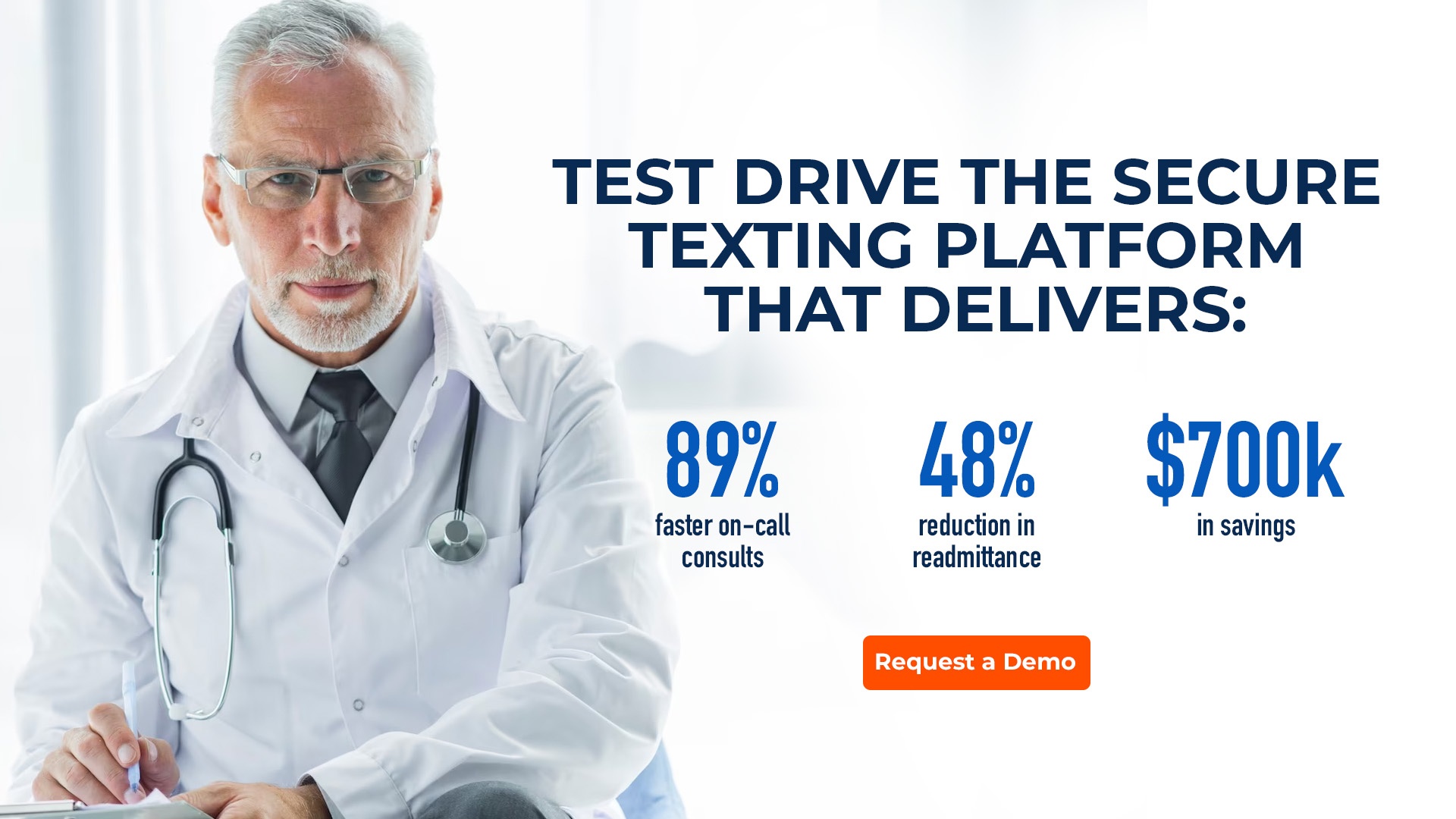The Silent Missteps in Medicine: Unveiling the Impact of Clinical Communication Errors

Did you know a significant percentage of medical mishaps are rooted not in surgical slips or pharmaceutical blunders but in the much-overlooked pitfalls of clinical communication failure?A report by CRICO Strategies, “Malpractice Risks in Communication Failures,” analyzed more than 23,000 malpractice suits and found that three out of every 10 cases included at least one specific breakdown in communication. Errors occur because information is mishandled, leading to it never being recorded or received. If there were to be miscommunication about a patient’s condition, it could result in serious consequences. A single misheard word or unshared note could be the difference between life and death.
Effective communication connects patient safety and quality care. In this article, we explore the causes and outcomes of communication failures and the steps we can take to reclaim the narrative of patient safety.
The Root Causes of Communication Breakdowns
Despite the importance of effective communication, clinical communication errors persist as a pervasive challenge within healthcare. These breakdowns in communication jeopardize patient outcomes and erode trust in the healthcare system, a persistent obstacle in medicine. Let’s look at some root causes behind these communication breakdowns so you can enhance patient safety and optimize care delivery.
Lack of Standardized Communication Protocols
The absence of standard protocols contributes to misinterpretation and error. Without established guidelines or frameworks for exchanging information, healthcare professionals may interpret and convey patient details inconsistently. Variances in how clinicians communicate patient data may cause individuals to interpret information differently.
In environments where multiple disciplines collaborate, such as during patient transfers, the absence of standardized protocols heightens the potential for miscommunication and information gaps.
 “Clinical communication can take place in many forms, from morning huddles, telephone calls, different text messages to conversations in elevators. It's difficult to define clinical communication under one umbrella process because there are so many variations,” explains Linda Fischer, Executive Advisor at Backline by DrFirst.
“Clinical communication can take place in many forms, from morning huddles, telephone calls, different text messages to conversations in elevators. It's difficult to define clinical communication under one umbrella process because there are so many variations,” explains Linda Fischer, Executive Advisor at Backline by DrFirst.
Handoff and Transitions of Care
Handoff and transitions of care are where communication breakdowns frequently occur in the patient’s journey. During transitions between healthcare providers, departments, or settings, vital patient information must be accurately conveyed to ensure continuity of care. However, these handoffs are often under pressure due to time restraints, high patient volumes, and reliance on memory, leaving room for errors and omissions. Incomplete or unclear transfer of information regarding diagnosis, treatment plans, medication regimens, and patient preferences can lead to:
- Misunderstandings among clinicians, patients, and their families
- Treatment delays
- Redundant testing
- Medication errors
During handoffs, patients may experience fragmented care, increased risk of adverse events, and decreased satisfaction with their healthcare experience.
Hierarchical Team Dynamics and Power Gradients
In hierarchical structures, communication often follows a top-down approach, inhibiting open dialogue and information flow among team members. Healthcare professionals lower in the hierarchy may feel hesitant or intimidated to voice concerns, ask questions, or challenge decisions made by those in positions of authority, fearing retribution or perceived insubordination. This dynamic can result in vital information being withheld or overlooked, leading to errors, preventable adverse events, and compromised patient safety.
Power differentials can also breed a culture of silence. Critical issues or safety concerns can go unaddressed due to a lack of psychological safety and trust within the team. As a result, essential communication channels for sharing insights, seeking clarification, and collaborating effectively become stifled, hindering the timely exchange of crucial information.
Inadequate Communication Training for Healthcare Professionals
Despite the critical role communication plays in patient care, training around communications is not always emphasized as much as the clinical aspects within the roles of healthcare professionals. As a result, healthcare professionals may lack the necessary training and skills to effectively navigate complex communication scenarios encountered in healthcare organizations. Without adequate training, healthcare professionals may struggle to convey information clearly or listen to patients' concerns. Miscommunication, misunderstandings, and information gaps can arise, leading to errors in diagnosis, treatment, and patient management.
Shortcomings in Using Disparate Systems
In modern healthcare environments, information is often stored and shared in various electronic health record (EHR) systems, communication tools, and other digital tools that may not seamlessly integrate. As a result, healthcare professionals face challenges in accessing, sharing, and interpreting patient information efficiently and accurately. Healthcare organizations need to consolidate their tech stack to enable efficient information exchange, reduce redundancies, simplify operations, and streamline workflows for enhanced patient care.
Language and Cultural Barriers
When healthcare professionals and patients do not share a common language or cultural background, effective communication can be challenging, leading to misunderstandings, misinterpretations, and inadequate delivery of care. Patients may struggle to articulate their symptoms, medical history, or concerns accurately while healthcare providers may face challenges in explaining diagnoses, treatment options, and instructions in a language that patients can understand. Unless a translator is readily available at the point of care, language barriers can result in reduced patient engagement in their treatment.
Ambiguities in Verbal and Written Communication
Verbal orders may be given hastily or in situations where noise levels are high, increasing the likelihood of misunderstandings or misinterpretations. For example, if a physician verbally orders a critical medication without specifying the medication name or frequency, there is ambiguity regarding the intended medication and instructions. Misinterpretations of orders can lead to medication errors, inappropriate treatments, or delays in patient care.
Example of vague communication: A nurse receiving a verbal handoff about a patient's condition may hear that the patient is "stable." Without further clarification on vital signs, symptoms, or recent interventions, the term "stable" lacks specificity and may lead to differing interpretations among healthcare team members.
Similarly, written documentation, including medical charts, progress notes, and medication orders, can also contain ambiguities that compromise effective communication. Illegible handwriting is a common issue in handwritten documentation, making it difficult for healthcare professionals to decipher critical information accurately.
Example of misinterpretations: A physician may write in a progress note that a patient's pain is "tolerable." Without specifying the patient's pain scale score or pain management plan, the interpretation of what constitutes "tolerable" pain may vary among healthcare providers involved in the patient's care.
Consequences for Diverse Healthcare Settings
Within hospitals and healthcare environments, multidisciplinary teams collaborate to deliver complex care. Miscommunication and misinterpretation are quick to happen, even more so in high-stakes environments, like intensive care units (ICU).
In these settings, patients often have complex medical conditions requiring close monitoring and intensive interventions. Effective communication is essential for coordinating care among ICU staff, including physicians, nurses, respiratory therapists, and pharmacists. However, the fast-paced nature of ICU care increases the risk of communication errors. Ambiguities in verbal orders, incomplete handoffs, and delays in conveying critical information can result in adverse events such as medication errors, missed changes in patient condition, or delays in initiating life-saving interventions.
 "The high acuity and complexity of ICU patients require seamless collaboration across clinical specialties to increase the likelihood of ideal outcomes. Real-time and accurate communication is key to that collaboration," adds Todd Thompson, Director of Operations at Backline by DrFirst.
"The high acuity and complexity of ICU patients require seamless collaboration across clinical specialties to increase the likelihood of ideal outcomes. Real-time and accurate communication is key to that collaboration," adds Todd Thompson, Director of Operations at Backline by DrFirst.
To mitigate the consequences of communication breakdowns in diverse healthcare settings, healthcare organizations must prioritize communication skills training, promote a culture of open communication and collaboration, and implement standardized communication protocols and tools. Additionally, leveraging technology solutions such as Backline can enhance communication efficiency and reduce the risk of errors. By addressing communication challenges proactively, healthcare organizations can enhance patient safety, improve care quality, and optimize outcomes across diverse healthcare settings.
The Toll on Healthcare Providers
Miscommunication within healthcare settings takes a toll not only on patients but also on the healthcare providers themselves. Effective communication is a cornerstone of quality patient care, yet the consequences of miscommunication affect the lives of healthcare providers. From increased stress and burden to compromised job satisfaction and morale, the toll of miscommunication on healthcare providers manifests in myriad ways, impacting their well-being and ability to deliver optimal care.
Understanding and addressing these challenges are paramount for fostering a supportive work environment, enhancing teamwork, and ultimately improving both patient outcomes and provider experiences within the healthcare landscape.
Fatigue and Workload Among Healthcare Staff
Ineffective communication often leads to inefficiencies in task delegation, coordination, and decision-making. When information is unclear or incomplete, healthcare staff may spend more time seeking clarification or resolving misunderstandings than with their patients. Miscommunication can also result in tasks being duplicated or missed altogether, further increasing the burden on healthcare providers and contributing to feelings of frustration and exhaustion.
High workload and fatigue can quickly become issues in healthcare. Both can impair cognitive function and decision-making abilities, making healthcare staff more susceptible to communication errors. Research has shown that fatigue can impair attention, memory, and judgment, leading to lapses in communication, misunderstandings, and errors in clinical reasoning. As healthcare providers become increasingly fatigued, their ability to process information and communicate effectively may decline.
Legal and Ethical Implications of Communication Errors
Communication errors in healthcare can have significant legal and ethical implications, affecting patient safety, trust in the healthcare system, and the professional reputation of healthcare providers and systems.
Communication errors may result in:
- Malpractice claims
- Lawsuits
- Potential liability for healthcare organizations and individual providers
In cases of medical malpractice litigation, communication errors can serve as evidence of a breach in the standard of care, potentially resulting in financial settlements or damage awards against healthcare providers and institutions.
Ethically, communication errors raise concerns related to patient autonomy, informed consent, and the duty of honesty and transparency in healthcare. Patients have a right to be fully informed about their medical condition, treatment options, and potential risks. Effective communication is essential for upholding this right. However, when communication errors occur, patients may be deprived of crucial information necessary for making informed decisions about their care.
Additionally, avoiding accountability and openness in response to communication errors out of fear of litigation or reputational harm can compromise the ethical obligation to be truthful and transparent in all communications with patients.
Strategies for Stronger Healthcare Communication
Effective communication lies at the heart of quality healthcare delivery. In recognition of the critical role communication plays in the healthcare ecosystem, let’s explore strategies aimed at enhancing these practices. Here are some ways healthcare organizations can cultivate an environment where communication thrives, ultimately enhancing patient care experiences and elevating the standard of care delivery.
Interprofessional Collaboration
By promoting collaboration among clinicians, healthcare organizations can enhance communication, coordination, and ultimately, patient outcomes. Here are a few ways to foster interprofessional collaboration and improve communication among healthcare professionals:
- Interdisciplinary team-based care models: Ensuring that interdisciplinary teams are able to communicate and collaborate effectively on patient care plans and decision-making. Leverage the expertise of each team member and encourage open dialogue and information sharing.
- Reinforce regular multidisciplinary rounds: Healthcare professionals can come together to discuss patient cases, review treatment plans, and address challenges collaboratively. A culture of open communication and mutual respect allows healthcare organizations to improve care coordination and reduce the likelihood of communication errors.
- Invest in communication training programs: Programs focusing on interprofessional collaboration and teamwork skills can help healthcare professionals develop the communication competencies necessary for effective collaboration.
- Leverage technology solutions: Platforms, such as Backline can facilitate information sharing and collaboration among healthcare professionals across different settings and locations. These tools enable real-time communication, secure exchange of patient information, and streamlined care coordination.
Role of Health Information Technology in Improving Communication
Consider consolidating your tech stack to improve communication. Backline can be optimized to support better communication and collaboration across your entire healthcare ecosystem. As an example, Backline can streamline consult and referral workflows with flexible communication paths and integration with your other clinical systems. Your organization can quickly and easily coordinate patient referrals and share supporting results, records, and forms securely.
Educating for a Better Future in Healthcare Communication
Education plays a pivotal role in fostering a culture of communication excellence within healthcare organizations, empowering care teams to communicate confidently with patients, families, and colleagues. These are some examples of innovative educational approaches for healthcare professionals to prevent clinical communication errors:
- Simulation-based training
- Virtual reality training
- Gamification
- Interprofessional education
- Peer coaching and feedback
- Videos, podcasts, or online modules
- Cultural immersion experience
- Integration of technology
Strategies for Effective Communication in Healthcare Settings
Effective communication is essential in healthcare settings to ensure safe, high-quality patient care and promote positive outcomes. Here are some strategies for fostering effective communication among healthcare professionals:
- Active Listening: Actively listen to patients and colleagues to understand their concerns, preferences, and needs.
- Open and Honest Communication: Foster a culture of open communication where team members feel comfortable expressing concerns, asking questions, and sharing information openly.
- Effective Handoffs and Transitions of Care: Ensure accurate handoffs during transitions of care (e.g., medication dosage, interventions, plan of care) to convey essential information about patients' conditions and treatment plans.
- Interprofessional Collaboration: Collaborate with colleagues from different healthcare disciplines to develop holistic care plans and address the complex needs of patients.
- Use of Communication Tools and Technology: Leverage communication tools and technology such as Backline to facilitate communication and information exchange among healthcare professionals.
- Conflict Resolution Skills: Develop skills in conflict resolution to address disagreements or conflicts that may arise among healthcare team members.
- Continuous Education and Training: Participate in ongoing education and training programs to enhance communication skills and stay updated on best practices in healthcare communication.
A Focus on the Patient
Tackling communication errors is essential to improving patient outcomes. By prioritizing effective communication strategies, leveraging advanced technology solutions, and fostering a culture of collaboration and transparency, healthcare providers can mitigate the risks associated with clinical communication errors and ensure optimal patient outcomes. Together, we can strive towards a future where every patient receives the highest quality of care, supported by seamless and effective communication across all levels of healthcare delivery.




.jpg?width=352&name=pexels-mart-production-7088498%20(1).jpg)

